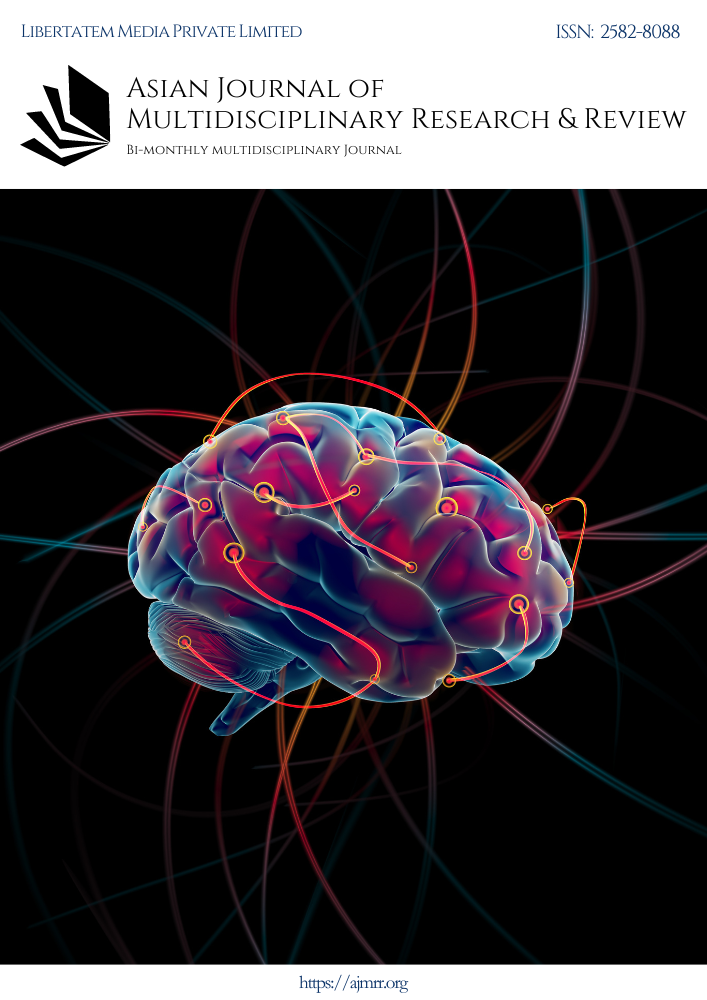ARTIFICIAL INTELLIGENCE PERFORMING HUMAN FUNCTIONS: USE OF ARTIFICIAL NEURAL NETWORKS AND THEIR SUFFICIENCY
Abstract
Artificial Intelligence (AI) has been at the forefront of almost every event around the world in recent times. Attempts have been made all over the world to incorporate this wonder technology as a bridge to newer avenues and advancements. In an attempt to aid human functioning, the journey to create AIs that can mimic human thinking has come into being using the method of Artificial Neural Networks (ANN). Investment, social media, aerospace, and the healthcare industries have all undergone radical change as a result of ANN's sophisticated network that mimics the human brain. While AI has made great strides in activities requiring computational and logical-mathematical intelligence, it has fallen short in simulating emotional and interpersonal intelligence, making it unlikely that AIs will replace humans and their roles. AI has a unique set of limitations that make it incapable of performing certain tasks that humans can comfortably and naturally carry out. While AI computers have an edge over human brains in that they can process and retain massive volumes of data which can produce more informed and precise results, these benefits mostly apply to logical and mathematical intelligence. Achieving a completely humanoid AI is difficult due to AI's limits in emotional intelligence, lack of human instinct, and inability to mimic human intellect.
AI has been used to replace people in some contexts, primarily for repetitive work and everyday human activities. However, AI cannot totally replace human functions due to its lack of morality, compassion, and intuition, especially in jobs requiring social skills, empathy, and judgment based on subjective criteria. The richness and difficulty of human qualities like creativity, anticipation, and judgment make them difficult to program into robots.
Downloads
Downloads
Published
Issue
Section
License

This work is licensed under a Creative Commons Attribution-NonCommercial-ShareAlike 4.0 International License.
License Terms
Ownership and Licensing:
Authors of research papers submitted to the Asian Journal of Multidisciplinary Research & Review (AJMRR) retain the copyright of their work while granting the journal certain rights. Authors maintain ownership of the copyright and grant the journal a right of first publication. Simultaneously, authors agree to license their research papers under the Creative Commons Attribution-ShareAlike 4.0 International (CC BY-SA 4.0) License.
License Permissions:
Under the CC BY-SA 4.0 License, others are permitted to share and adapt the work, even for commercial purposes, as long as proper attribution is given to the authors and acknowledgment is made of the initial publication in the Asian Journal of Multidisciplinary Research & Review. This license allows for the broad dissemination and utilization of research papers.
Additional Distribution Arrangements:
Authors are free to enter into separate contractual arrangements for the non-exclusive distribution of the journal's published version of the work (e.g., posting it to institutional repositories or publishing it in books), provided they acknowledge the initial publication of the work in the Asian Journal of Multidisciplinary Research & Review.
Online Posting:
Authors are encouraged to share their work online (e.g., in institutional repositories or on personal websites) both prior to and during the submission process to the journal. This practice can lead to productive exchanges and greater citation of published work.
Responsibility and Liability:
Authors are responsible for ensuring that their research papers do not infringe upon the copyright, privacy, or other rights of any third party. The Asian Journal of Multidisciplinary Research & Review disclaims any liability or responsibility for any copyright infringement or violation of third-party rights in the research papers.



